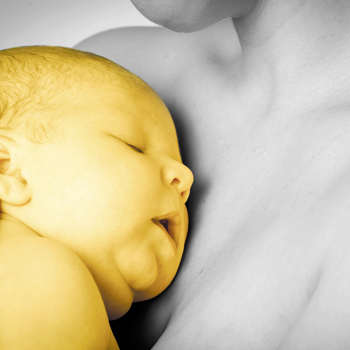
Jaundice that progresses to kernicterus (a type of brain damage) and cerebral palsy should not be happening in the U.S. today. But it still is, as evidenced by malpractice lawsuits over the condition known as kernicterus. Why? According to researchers, most kernicterus is the result of hospital systems breakdowns; for example, doctors and nurses fail to communicate, lab tests go missing, orders fall through the cracks, safety policies are lacking or are not enforced. In short, negligence. Every kernicterus case our experienced cerebral palsy lawyers handle is a tragedy that could have easily been prevented.
How Kernicterus Occurs
Kernicterus is a type of brain damage that can occur when a chemical called bilirubin builds to a critical level in a baby’s blood and the baby goes untreated for even a short period of time. Babies with this type of brain damage often develop athetoid cerebral palsy.
Among medical practitioners, kernicterus is known as a “never event,” as in “it should never happen.” This is because standards of medical care call for all newborns to be routinely evaluated, tested and when necessary, quickly treated for concerning levels of bilirubin. The development of kernicterus is rare, in fact. But it still occurs.
This is unacceptable given the lifelong consequences to otherwise healthy children.
The Role of Jaundice in Kernicterus
Jaundice refers to the often yellowish tinge to a newborn’s skin caused by a build-up of the chemical bilirubin in the blood. Bilirubin is a waste product produced by the body to get rid of old blood cells and is processed by the liver. In the womb, the mom’s liver does the processing for the fetus. But once born, the baby’s liver has to take over this function. If baby’s liver isn’t fully functioning yet, as is often the case, bilirubin builds up, resulting in jaundice. If jaundice is not identified, monitored and treated appropriately, it can quickly develop into kernicterus.
Preventing Kernicterus
Preventing kernicterus is the responsibility of the doctors and hospitals providing medical care to the mother and baby. Based on accepted standards of medical care as recommended by the American Academy of Pediatrics, this includes:
1. Screening mothers-to-be for these kernicterus risk factors and noting this clearly in medical records:
- A sibling who was jaundiced as a neonate
- ABO blood type incompatibility or Rh incompatibility
- Deficiency in glucose-6-phosphate dehydrogenase, a genetic disorder
- East Asian or Mediterranean descent
2. Early assessment of those babies who are at a higher risk for kernicterus:
- Babies born a few weeks premature
- Obvious jaundice in the first 24 hours of life
- Recognition that jaundice often is not visually discernible in babies with dark skin
3. Routine testing of all newborns for jaundice:
- All newborns should be assessed for jaundice every time their vital signs are taken, or every eight hours, while they are still in the hospital
- The hospital should arrange for monitoring of babies identified as jaundiced before leaving the hospital
4. Immediate treatment of newborns with a concerning level of bilirubin:
- Infants with concerning levels of bilirubin for their age should be treated with phototherapy, or light exposure. If bilirubin levels don’t decrease with this treatment, infants should receive a blood exchange through transfusion
- Infants being treated for jaundice should also be evaluated for blood related diseases
5. After mom and baby go home:
- Jaundice can appear several weeks after discharge, but normally surfaces 3-5 days after birth. All new mothers should be given written and verbal instructions about the symptoms of jaundice and the importance of fluid intake in decreasing bilirubin levels
- All new mothers and babies should be seen again by their doctors or a specialty nurse within 48 hours after discharge
- All new mothers should receive breast-feeding instructions, particularly as it affects the baby’s ability to process bilirubin
Kernicterus Lawsuits Can Reveal Negligence
Hospitals and doctors know that most babies may be born with jaundice; jaundice tests are simple and the treatment is cheap and easy. There is absolutely no reason a newborn should develop kernicterus and live a life with cerebral palsy or other deficits because of the effects of jaundice. Kernicterus is preventable and unacceptable.
If your child developed kernicterus and cerebral palsy, you should contact an experienced personal injury attorney who can investigate and make sure medical malpractice or negligence did not play a role. You could be entitled to compensation to help care for your injured child.
RELATED POSTS
6 Questions to Ask Potential Medical Malpractice Lawyers
Cerebral Palsy Settlements
